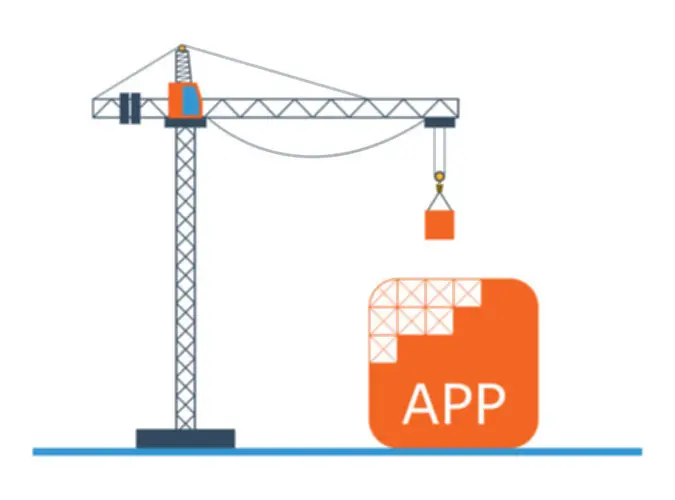Every microservice in the structure has a bounded context, that means it is liable for a specific functionality or domain. For example, one microservice could deal with user authentication, whereas another microservice could deal with stock administration. This division of duties permits for higher separation of considerations and makes it easier to develop and maintain each microservice. The enterprise logic layer incorporates the core functionality of the applying. It processes person inputs, performs calculations, and makes selections based mostly on the applying’s guidelines and necessities. This layer is the place the application’s logic and algorithms are implemented.
One notable advantage of SOA is its ability to facilitate seamless integration with external systems and third-party services. By leveraging standardized protocols and interfaces, SOA permits organizations to simply incorporate external functionalities into their purposes. Microservices structure takes the concept of service-oriented architecture to the next stage. In this method, an utility is split into a set of small, self-contained companies which are responsible for specific enterprise capabilities.
Total, each SOA and microservices adopt a modular strategy to software program growth, emphasizing the division of performance into particular person items. Nonetheless, the precise architectural parts and design rules range, reflecting the different objectives and challenges of every method. In the next part, we are going to explore the advantages and disadvantages of SOA and microservices that will assist you difference between soa and microservices make an informed determination in your group. Useful Resource utilization can be extra environment friendly in microservices, as assets are allocated at the service degree. This contrasts with monolithic purposes, the place sources must be allocated based mostly on the whole utility, typically leading to inefficiencies.
Serverless software program architecture is beneficial for accomplishing one-time tasks and auxiliary processes. It works nice https://www.globalcloudteam.com/ for client-heavy apps and apps which might be growing quick and have to scale limitlessly. Many business homeowners want their apps to turn into influential and scalable like Google or Fb. Your app will mechanically scale as your load or consumer base increases with out affecting efficiency.
Soa Architecture Vs Microservice Structure
Microservices have gained reputation among startups and small companies as a outcome of their capacity to help rapid innovation and steady deployment. Service-Oriented Structure (SOA) is an architectural style that advocates constructing software systems as a set of loosely coupled services. These services are self-contained, impartial items of functionality that can be accessed remotely through standardized protocols, corresponding to HTTP or SOAP.
E Staff Structure And Collaboration
When a service fails repeatedly, the circuit breaker journeys, stopping further requests and allowing the system to recuperate gracefully with out extra strain. This sample is crucial for sustaining the steadiness and reliability of microservices functions. An API gateway serves as a central entry level for external requests, simplifying service interactions and managing authentication.
- The firm has been utilizing its old codebase thus far with updates of interface and functionality, but refrain from refactoring its architecture fully.
- This allows organizations to integrate disparate techniques and functions, both internally and externally, making a more connected and environment friendly IT ecosystem.
- Moreover, agility provides a safer deployment course of and improved uptime.
- Transitioning from SOA to microservices or monolithic architecture is also a significant undertaking.
- Contemplate selecting a microservices structure when you’ve a number of experienced teams and when the app is complicated sufficient to interrupt it into companies.
- To select between the two architectures, contact an professional development group who will analyze your idea and choose the best-fitting answer.
Benefits Of Microservices Structure
In The Meantime, microservices are simpler to deploy as they’re designed to scale in the cloud environment. Each microservice is an independent applicaiton that developers can containerize and deploy on the cloud. Another challenge with microservices is the elevated operational overhead. With a number of providers running independently, monitoring, logging, and troubleshooting can turn into more complex. It requires a complete set of tools and practices to successfully manage and monitor the entire trello system.
Software testing of microservice structure is difficult, to say the least. Even though deployment may be fast, it is difficult to recreate environments for testing and take a look at all independently deployable elements individually. Since all of the providers in microservice structure work independently, any error or fault impacts solely a particular service, not the entire utility. That’s why including new options and experimenting without the fear that it will break down the app is easier. The extra small elements there are, the better it is to hold up an architecture. Moreover, microservices permit teams to experiment with the characteristic and roll again if something doesn’t work.

EBay reworked its application by implementing microservices architecture to handle over seventy five billion database calls daily. Coca-Cola and Twitter also adopted microservices to improve the pace and agility of their functions throughout varied platforms. These corporations illustrate the practical advantages of microservices, including improved speed, flexibility, and efficiency. Operational overhead in a microservices architecture may be significant. Organizations must manage the complexity of a number of companies, including updates, orchestration, and monitoring.

Vendor lock-in describes a situation if you give a vendor full control of your operations. As a outcome, adjustments to enterprise logic are limited and migration from one vendor to another may be difficult. When Netflix migrated to microservices, they first moved non-essential services like movie recommendations earlier than transitioning core services like content streaming.
You need the proper infrastructure in place earlier than you can start with microservices. You require extra effort to set up the instruments and workflow for microservices, but they are preferable for building a posh and scalable application. Monolithic functions are easier to start out with, as not a lot up-front planning is required. However, the applying can become advanced and difficult to update or change over time. Uber’s staff needed to launch new updates at an extremely quick pace, and a monolith, with its technique of all-at-once growth, couldn’t be sustainable. A web site was created in the early days of the Internet when microservices weren’t a factor but.
One of the key characteristics of microservices is their cloud-native strategy. Each service operates independently however is an element of a larger utility framework, often utilizing cloud sources to ensure scalability and fault tolerance. Migrating monolithic applications to a microservices structure is possible but requires careful planning and implementation. It’s necessary to pace the steps with constant suggestions from stakeholders. Both monolithic and microservices purposes expertise code battle, bugs, and unsuccessful updates.
